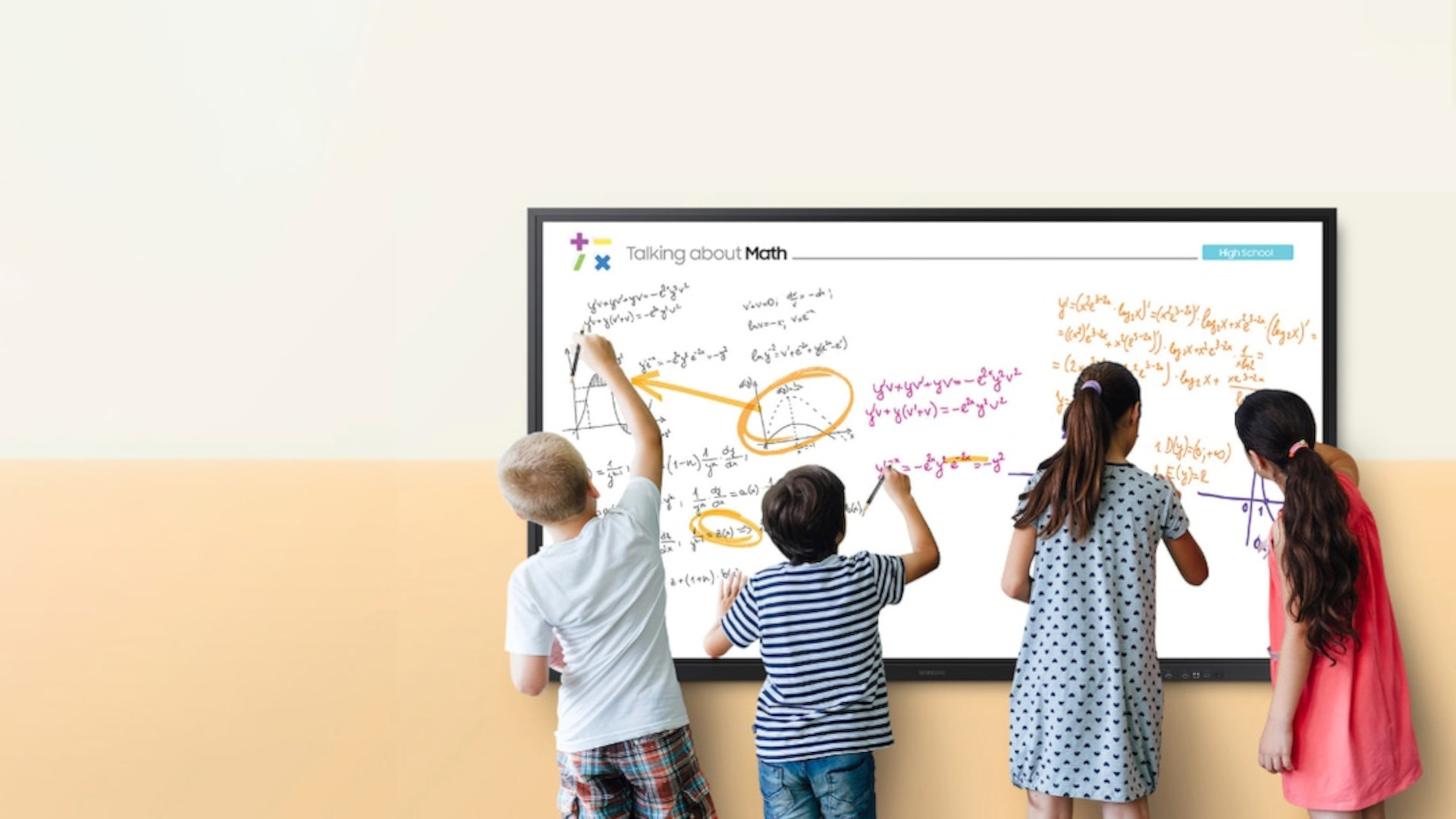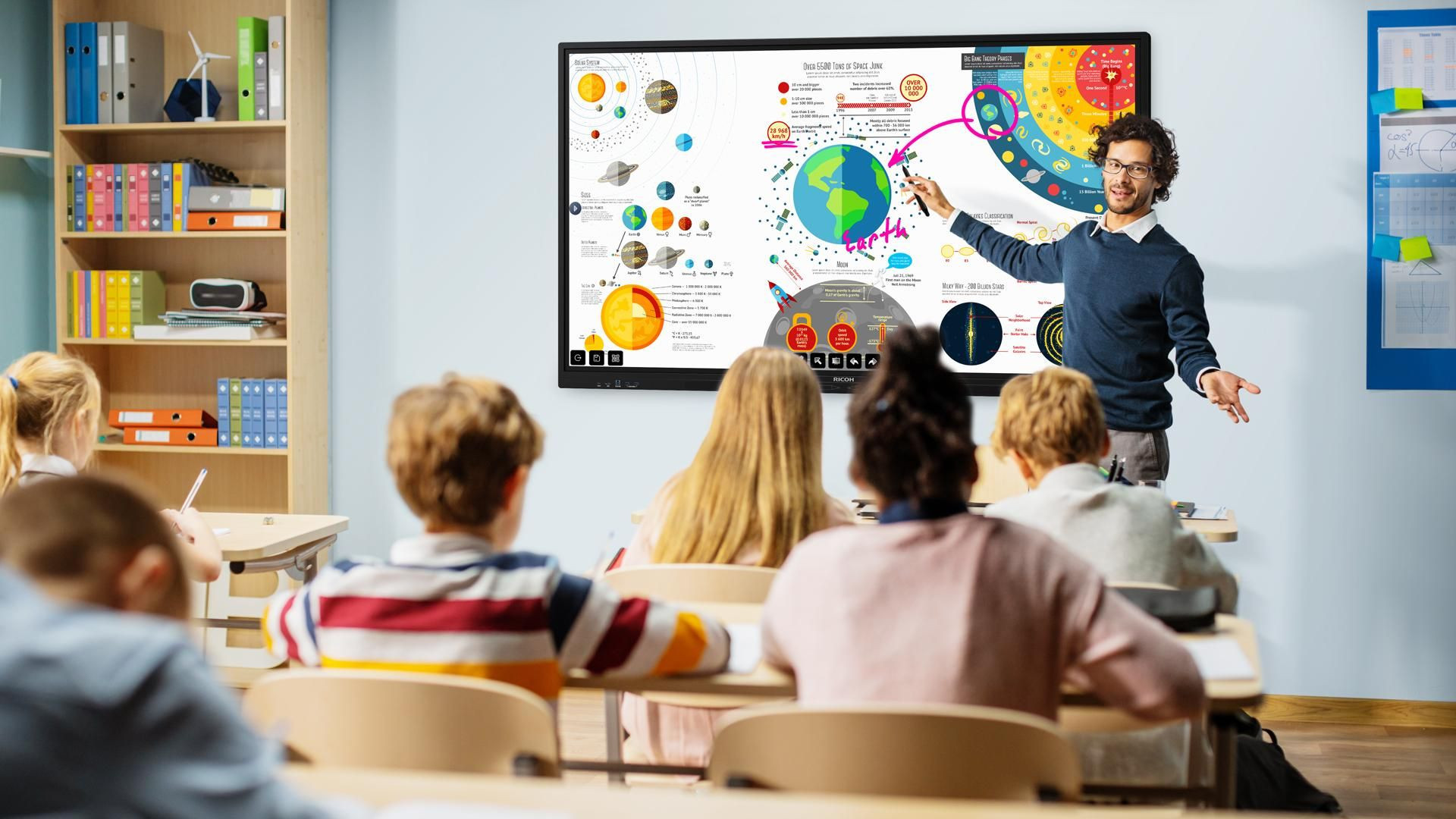
The right interactive whiteboard can enhance an educational environment massively, if you choose wisely. The key here is to know what it is you want, and need, from the right interactive whiteboard for your situation.
This guide aims to lay out all you need to consider before making an investment in an interactive whiteboard for your school or district.
While cost may be a big concern up front, it's worth balancing that against the features you need as you can now get a lot for your money. It's also important to consider how long a device will last. You could save money now but need to buy a new one in a few years, or spend more now and have it last longer. Which brings us back to it all depending on what you need.
From wifi connectivity and built-in cameras and microphones to high-resolution video and audio playback with a high number of touch sensitivity points, there are many device features to consider. As is the software you'll want to run on the interactive whiteboard.
After familiarizing yourself with what to look for, consider our best interactive whiteboards guide to find which model suits you ideally.

Which type of interactive whiteboard is best?
Before you start, the first consideration is what type of interactive whiteboard you want. Several variants are available, including: Infrared/Optical, resistive touch, electromagnetic, and ultrasonic/infrared hybrid. Essentially these are all differing ways of detecting touch on the display, some being more sensitive than others.
Sensitivity can be important if you want to draw on the screen with accuracy, or you require it to detect lots of kids’ fingers working on a group project at the same time. If you only need the interactive whiteboard to show presentations and occasionally touch to edit or move forward, then this could be an area where you save money by going for a more basic option.
The most commonly sold type these days is the infrared/optical version, which offers multi-touch, high responsiveness, and great durability. That said, this is generally one of the more expensive options.
The resistive touch type is more affordable but is usually single touch only and is less durable thanks to a soft touch screen.
The electromagnetic whiteboards are very precise when it comes to sensitivity, are durable, and not affected by light conditions, except these require a special stylus and don't support finger touch. These are also generally more expensive.
The ultrasonic/infrared hybrid option is a way of adding interactivity to existing whiteboards with real dry-erase marker use becoming interactive -- this is a good money-saving option.
Screen quality
Another important consideration is screen quality. This includes the size, resolution, and image fidelity that is offered. You'll want to go larger for bigger rooms, of course, but also consider moving up the resolution too. If you go for a very big screen but the resolution stays lower, then the image will appear blocky and less clear. It also means viewing detail is less easy both for the teacher up close and for students further away.
You'll also want to consider brightness of the display as it may be in sunlight, which can make it more difficult to see. Features such as anti-glare coverings or a high-nits brightness count are worth looking at in these instances.

Software compatibility
What you actually need done on the interactive whiteboard is worth considering as these requirements may mean you need access to various software types.
So right up front make sure the screen has a system that is able to work with all the software you use in class. This may also apply to devices, if you plan to use hardware such as webcams or microphones plugged into this screen.
Check the compatibility with existing educational apps and make sure that you can either run it natively on the screen, or run any via a plugged in laptop, for example.
It's also a good idea to think about how easy the software is to learn and use, as something with a more complex layout and steep learning curve may require the need to additionally invest in training as part of the new hardware too.
Connectivity
How your interactive whiteboard works with your school infrastructure is important. You'll want to think about how it connects to the existing network and internet. Will you need Ethernet ports or is wifi sufficient? And if so, what level of wifi are you going to go for so that this is future-proofed enough to last?
If there is a need to plug in laptops, memory sticks, or flash drives, you'll also want to look out for the necessary ports and software to support those options.
Pricing
The cost you’re willing to pay for your interactive whiteboard, or multiple ones, is of course a big consideration. As mentioned, it’s important to consider the upfront charges, ongoing costs, and eventual replacement figures.
You may have been considering new displays in the school and by going for a higher resolution whiteboard, it may be possible to consolidate those costs into a single device that caters to all your needs.
Be sure to check warranty and guarantee coverage as some models offer extended periods to provide peace of mind while also suggesting these are built to last.







